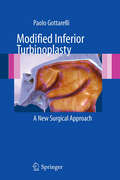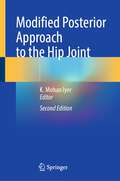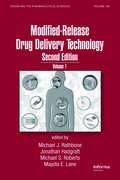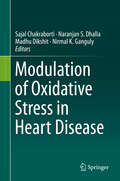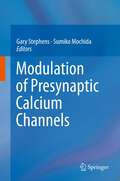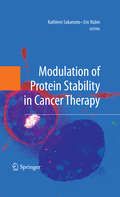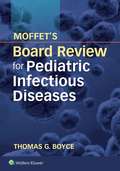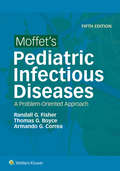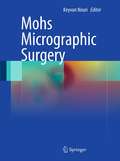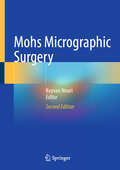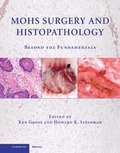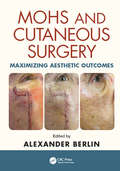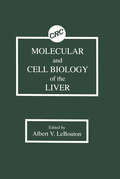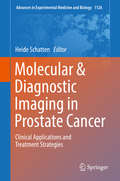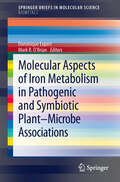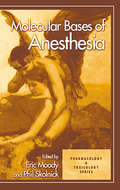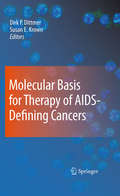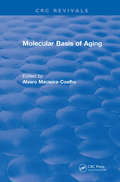- Table View
- List View
Modified Inferior Turbinoplasty
by Paolo GottarelliHumans can resist 40 days without eating and 4 days without drinking, but only 4 minutes without breathing: this tells us much about its fundamental importance. Breathed air is slowed down, filtered, warmed and humidified by the nose; many mechanisms are involved in this act, which prevent bronchial tubes and pulmonary alveolus from receiving an excessive and sudden air load. It is well known, on the other hand, that breathing through the mouth causes a lot of problems: inflammatory diseases of the upper airways, sleep apnea syndrome, but also, in some cases, bronchial, pulmonary and even cardiac disorders, that are more easily affecting patients not able to breathe correctly through the nose. For this reason, restoring an efficient nasal function is a very important - and in some cases crucial - issue. This book describes in details an innovative surgical technique called modified inferior turbinoplasty, which offers an excellent solution to the problems associated with the lower turbinate hypertrophy. A turbinate (or nasal concha) is a long, narrow, curled bone shelf that protrudes into the breathing passage of the nose. Most surgical interventions treat only the soft parts of hypertrophic turbinates using laser therapy, radiofrequency treatment, and electrocoagulation, but these procedures often lead to relapse. With this technique, in contrast, all anatomic parts of the turbinate are treated, including bone tissue: the surgeon reduces the inferior nasal concha and the internal nasal tissue, and the mucosa is then remodeled with sutures. The modified inferior turbinoplasty allows the complete avoidance of swabs in the nose, which is fundamental for patients well-being and grant them a quicker recovery. The book will be very useful for othorinolaryngologists, plastic surgeons, endoscopic and maxillofacial surgeons.
Modified Posterior Approach to the Hip Joint
by K. Mohan IyerThis book provides a detailed description of the anatomy as well as surgical aspects of posterior approach to the hip joint. This approach has been highlighted in several key texts in orthopaedics over the years with this book offering the reader a comprehensive overview in a single resource.Modified Posterior Approach to the Hip Joint, 2nd Edition provides a well-structured overview of the original surgical findings undertaken by the Author, which are still followed ardently today. Clinicians seeking a clear and illustrated guide to the posterior approach to hip surgery will find this book to be an indispensable resource in everyday clinical practice.
Modified-Release Drug Delivery Technology: Volume 1 (Drugs and the Pharmaceutical Sciences)
by Michael J. Rathbone Michael S. Roberts Jonathan HadgraftThis two volume Second Edition describes the anatomical, physiological, pharmaceutical, and technological aspects of delivery routes, found in areas like:Oral Ocular Dermal and transdermal VaginalColonic Oral mucosal Nasal PulmonaryProviding insight and critical assessment of the many available and emerging modified release drug delivery systems fo
Modifizierte Muskelfunktionsprüfung bei Multipler Sklerose: modifiziert – selektiv – standardisiert
by Regula Steinlin EgliDas Praxisbuch beschreibt die Grundlagen und Durchführung der selektiven Muskelfunktionsprüfung von Patient*innen mit Multipler Sklerose, die eine spezifische Spastikkontrolle voraussetzt. Evidenzbasierte Methoden zur Bewertung der Muskelkraft jeder einzelnen Muskelgruppe werden detailliert beschrieben und mit Fotos veranschaulicht. Somit kann die selektive Muskelkraftprüfung in der Physiotherapie und Ergotherapie eingesetzt werden, ohne unerwünschte Einwirkung der Spastik. Aus dem Inhalt: Modifizierte Muskelkrafttestung aller Muskelgruppen der unteren und oberen Extremität sowie dem Rumpf, detaillierte Beschreibung der Ausgangsstellungen und Durchführungen, Kontrollkriterien und Bewertungskriterien, Evidenzbasierte standardisierte Testungen. Plus: Videos via More Media App ergänzen die Fotos ideal. Klar strukturiert und praxisnah hilft dieses Buch, das Management von Muskeltests bei Patient*innen mit Spastik und Paresen zu optimieren und die Auswertung evidenzbasiert zu interpretieren.
Modulation of Oxidative Stress in Heart Disease
by Naranjan S. Dhalla Nirmal K. Ganguly Sajal Chakraborti Madhu DikshitThis book highlights the multifaceted roles of Reactive Oxygen Species (ROS) in modulating normal cellular and molecular mechanisms during the development of different types of heart disease. Each chapter in the book deals with the role that altered redox homeostasis plays in the pathophysiology of heart disease. In addition, the book explains how reactive oxidant species interact with their targets and provides novel strategies for attenuating oxidative stress-induced types of heart disease.The book not only covers ROS-induced response in heart disease at the cellular level, but also demonstrates that an imbalance of redox states has its roots in our genes, and explains the ways gene expression is regulated. In turn, it reviews potential sources of ROS, their pathological effects on the heart, and potential sites for therapeutic interventions.
Modulation of Presynaptic Calcium Channels
by Gary Stephens Sumiko MochidaThis book will bring together leading international experts to discuss recent advances in basic scientific knowledge regarding the regulation of presynaptic Ca2+ channels. Importantly, Ca2+ channels represent one of the most widely modulated proteins in the body, being the target of a range of effector pathways and drugs; this range will be fully represented here. A number of therapeutic drugs target the Ca2+ channel complex, including the anti-epileptic gabapentinoid and analgesic ziconotide drugs and the pharmaceutical industry is searching for Ca2+ channel blocking drugs, particularly in the pain, epilepsy, ataxia and migraine areas. Such potential future therapies will be discussed here. Scientific disciplines will focus on electrophysiological studies, but will extend to neuroscience, genetics and biochemical areas. The work described will represent advances at the cutting edge of current neuroscience research and is timely and highly appropriate for the Springer book series.
Modulation of Protein Stability in Cancer Therapy
by Eric Rubin Kathleen SakamotoThe book that Sakamoto proposes along with Eric Ruben will be a comprehensive monograph on the role of protein modulation in cancer therapeutics; it will focus on targeting molecules that regulate protein stability in a variety of tumors.
Moffet's Board Review for Pediatric Infectious Disease
by Thomas G. BoycePublisher's Note: Products purchased from 3rd Party sellers are not guaranteed by the Publisher for quality, authenticity, or access to any online entitlements included with the product. Until now, review and preparation for the pediatric infectious diseases board exam could be costly, time-consuming, and generic in its approach. Moffet’s Board Review for Pediatric Infectious Diseases offers pediatric residents, fellows, and practitioners a new, effective method of study that’s both affordable and self-paced. This first-of-its-kind review tool prepares you for the board exam and for the challenges you’ll encounter in taking care of children with infections.
Moffet's Pediatric Infectious Diseases: A Problem-Oriented Approach
by Randall Fisher Thomas G. Boyce Armando G. CorreaStaying true to the unique, problem-oriented approach of Dr. Hugh Moffet’s previous editions, the fifth edition of Moffet’s Pediatric Infectious Diseases walks the reader step by step through diagnosis and management using a signs and symptoms approach. This patient-oriented structure leads to a logical development of a differential diagnosis and evaluation and treatment plan, offering clear steps to confirm the diagnosis and provide appropriate therapy.
Mohs Micrographic Surgery
by Keyvan NouriThis book is written for dermatologists, otolaryngologists, facial plastic surgeons and any physician who want to provide state of the art treatment for skin cancer patients. Considering the high incidence of non-melanoma skin cancers such as Basal Cell Carcinoma and Squamous Cell Carcinoma (accounting for over one million cases per year in the United States) and since Mohs Micrographic Surgery has become the treatment of choice for these skin cancers, the popularity of this technique has been increasing dramatically, worldwide.
Mohs Micrographic Surgery
by Keyvan NouriThis completely updated textbook provides a key resource for those embarking upon a career in Mohs surgery and is designed to support those readers taking their Boards in this dermatologic subspecialty. The incidence of skin cancer is 3.5 million per year and accounts for more than 50% of all cancers combined, the majority of which are basal cell and squamous cell carcinomas. Mohs surgery has become the treatment of choice for certain of these carcinomas and other cutaneous tumors, and benefits from a high cure rate and low recurrence rate. Physicians in all of the major disciplines of medicine will encounter patients with cutaneous cancers who have undergone Mohs surgery or may need it in the future. Mohs Micrographic Surgery has been written as a foundation to provide readers with the fundamentals of Mohs surgery. Each chapter is easy to read, with carefully designed learning objectives and summary boxes of all the major points. The chapters are written by world-renowned physicians in their respective specialties and as such provides a vital learning tool for all training to be a Mohs surgeon.
Mohs Surgery And Histopathology: Beyond The Fundamentals
by Ken Gross Howard K. SteinmanMohs surgery is a highly effective treatment for certain cutaneous and oral pharyngeal cancers. The procedure allows for the precise and complete removal of cancers while preserving significant amounts of normal tissue. Through the presentation and orientation of the specimens' complete surgical margin on pathology slides, the location of tumor foci and other relevant findings can be correlated with their locations on the surgical wound. The ability to create perfect slides for histological examination lies at the core of effective Mohs surgery. These procedures have a 99 percent cure rate for certain cancers when implemented correctly. This book describes the methods the dermatologist, pathologist, or technician can use to optimize the Mohs technique and produce the highest-quality slides and highest cure rates possible.
Mohs and Cutaneous Surgery: Maximizing Aesthetic Outcomes
by Alexander BerlinAchieving the best aesthetic results in Mohs and other cutaneous surgery requires proper patient selection, careful surgical technique, and meticulous postoperative care. Yet despite the best efforts of both surgeon and patient, complications may develop, sometimes resulting in suboptimal or objectionable scarring.Mohs and Cutaneous Surgery: Maximi
Molar Incisor Hypomineralization: A Clinical Guide to Diagnosis and Treatment
by Katrin BekesThis book is a wide-ranging reference on current clinical and scientific knowledge regarding the various aspects of molar incisor hypomineralization (MIH). Background information is first presented on the structural properties of hypomineralized enamel, the prevalence of MIH, and potential etiological factors. Subsequent chapters focus on key considerations in clinical practice. Diagnostic criteria, classifications, and treatment strategies are discussed and detailed attention is devoted to potential associations between MIH and caries, the occurrence of hypomineralized primary teeth, and the knowledge and experience of dentists concerning MIH. In the last part of the book, the different treatment options are systematically presented and reviewed, covering pain control, prophylaxis and desensitization, fissure sealing, direct and indirect restorations, and extraction therapy. The cost-effectiveness of the available procedures is also considered. The book is written by acknowledged international experts in the field and will be an ideal source of up-to-date information and guidance for both dental professionals and postgraduate students.
Molecular & Cell Biology of the Liver
by Albert V. LeBoutonMolecular and Cell Biology of the Liver features the latest research findings regarding liver structure and function. A unique feature of the book is the brief science reviews that are included in each chapter which provide essential background information to allow readers to better grasp the subject matter within a chapter. The book covers liver biology from the molecular level to groups of liver cells and explains how groups of hepatocytes interact in similar microenvironments. Other important cell types found in the liver are also examined. Illustrations ranging from electron micrographs to fully rendered drawings act as visual aids to help readers understand complex structural-functional interactions. Molecular and Cell Biology of the Liver will benefit hepatologists, gastroenterologists, cell biologists, anatomists, toxicologists, and other researchers interested in liver structure and function.
Molecular & Diagnostic Imaging in Prostate Cancer: Clinical Applications And Treatment Strategies (Advances in Experimental Medicine and Biology #1096)
by Heide SchattenThe second of two companion books which address the biology and clinical aspects of prostate cancer. This volume, Prostate Cancer: Molecular & Diagnostic Imaging and Treatment Stategies, discusses both classic and the most recent imaging approaches for detection, early diagnosis and treatment of prostate cancer. The companion title, Cell & Molecular Biology of Prostate Cancer, covers classic and modern cell and molecular biology as well as genetics, epigenetics, mitochondrial dysfunctions and apoptosis, cancer stem cells, angiogenesis, progression to metastasis, and treatment strategies including clinical trials related to prostate cancer. Taken together, these volumes form one comprehensive and invaluable contribution to the literature.
Molecular Analysis of Cancer
by Jacqueline Boultwood Carrie FidlerLeading researchers describe in step-by-step detail their best state-of-the art molecular techniques for elucidating the biochemical processes associated with human cancer. Among the techniques presented for identifying chromosomal rearrangements are fluorescent in situ hybridization (FISH), spectral karyotyping (SKY), comparative genomic hybridization (CGH), microsatellite analysis, PCR and RT-PCR, and DNA fingerprinting. Additional methods include SSCP, DGGE, the nonisotopic RNase cleavage assay, and the protein truncation assay and DNA sequencing for identifying mutations.
Molecular Applications in Cytology
by Fernando C. SchmittThis book is intended for practicing pathologists and cytopathologists, as well as for pathology trainees and cytotechnicians. It starts with a detailed description of the extremely important pre-analytical phase for molecular testing followed by a presentation of the key tests and their application in different organs, e.g. the lung or thyroid. Step-by-step instructions for the different assays, reporting and clinical integration of the test results are discussed. The authors help the reader to benefit from their experiences by providing a valuable tool for the implementation of these techniques in daily practice.Though the use of molecular techniques is well established in surgical biopsies, to date they are not widely used in connection with cytological material. However, in some fields like lung cancer or aspirates from the pancreas and biliary tract the only available material for diagnosis is the cytological preparation a fact that has created a need for the standardization of molecular techniques on cytology.
Molecular Aspects of Hematologic Malignancies
by Malgorzata Dawidowska Tomasz Szczepanski Michal WittThis book provides a state-of-the-art approach to the molecular basis of hematologic diseases and its translation into improved diagnostics and novel therapeutic strategies. Several representative hemato-oncologic malignancies are analyzed in detail: acute lymphoblastic leukemia, acute myeloid leukemia, B-cell Non-Hodgkin lymphomas, multiple myeloma, chronic lymphocytic leukemia, chronic myeloid leukemia, myelodysplastic syndromes, and myeloproliferative neoplasms. Experts in the field describe the molecular methods applied for modern diagnostics and therapies, such as hematopoietic stem cell transplantation, donor recipient matching, banking of biological material, analyses of post-transplant chimerism, and minimal residual disease monitoring. The volume concludes with an extensive section comprising thorough step-by-step protocols of molecular techniques in hematology, all of them validated in the authors' own laboratories.
Molecular Aspects of Iron Metabolism in Pathogenic and Symbiotic Plant-Microbe Associations
by Dominique Expert Mark R. O'BrianIron plays a key role in biology as essential cofactor of numerous proteins. However, since it is only slightly soluble its bioavailability can be readily compromised under aerobic conditions. Moreover, due to its ability to catalyze the generation of free radicals, iron can also be toxic. Thus, it doesn't surprise that living organisms have developed sophisticated means for acquiring iron whilst tightly controlling the intracellular concentrations of this metal in response to environmental conditions. Also, the critical role of iron has long been acknowledged in host vertebrate-parasite relationships where both partners compete for the acquisition of this essential element and activate complex signaling cascades to control their iron homeostasis during infection. Following the great interest that the mechanisms regulating the acquisition of iron and the control of iron homeostasis have generated among researchers studying plant-pathogen and legume-rhizobia interactions, this book offers a comprehensive analysis of irons' various roles in the plant-microbial associations. The introductory chapter stresses the essentiality of iron in biological systems. The second chapter surveys the abundance of information on iron's pivotal role in microbial plant pathogenesis and defence. Finally, the third chapter reviews the advances in our understanding of iron metabolism in the rhizobia, soil bacteria able to establish a symbiotic association with legumes and carry out nitrogen fixation. Molecular Aspects of Iron Metabolism in Pathogenic and Symbiotic Plant-Microbe Associations is a valuable resource to microbiologists, pathologists and scientists interested in iron uptake and metabolism in microbial pathogenesis, rhizobia legume associations, and plant physiology and immunity.
Molecular Bacteriology: Protocols and Clinical Applications
by Neil Woodford Alan JohnsonIn Molecular Bacteriology: Protocols and Clinical Applications, Woodford and Johnson bring together in a single volume a state-of-the-art collection of detailed molecular methods for the diagnosis and clinical investigation of bacterial infections. These wide ranging techniques-each presented by recognized experts who have fine-tuned their methods for optimum performance-will permit readers to establish them successfully in their own laboratories. An accompanying series of minireviews highlights and explains the clinical and epidemiological relevance of the techniques and shows how they may be applied to major pathogen species and various types of antibiotic resistance. Molecular Bacteriology: Protocols and Clinical Applications enlarges our current understanding of the role that molecular methodology can play in modern medical bacteriology, fully explaining both the practical and theoretical aspects of the cutting-edge methods that are increasingly finding diagnostic use in laboratories throughout the world. An authoritative laboratory resource for everyone working with infectious diseases today, this book's insightful reviews and detailed protocols will soon win many devotees.
Molecular Bases of Anesthesia (Handbooks in Pharmacology and Toxicology)
by Eric Moody and Phil SkolnickMolecular Bases of Anesthesia provides a clear overview of the state of knowledge about anesthetic mechanisms at the molecular level of occurrence and focusing on the latest state-of-the-art techniques that relate to how anesthetic drugs cause unconsciousness. With contributions by leading experts, this timely book includes chapters on how
Molecular Basis and Emerging Strategies for Anti-aging Interventions
by Syed Ibrahim Rizvi Ufuk ÇakatayThis book describes the nature of aging, age-related disorders, and the molecular principles of emerging strategies for anti-aging interventions, while also discussing the discovery of targets for geroprotective drugs. Although significant medical advances in the treatment and eradication of life-threatening conditions such as cardiovascular and infectious disease have been made over the past five decades, the prevalence of age-related disorders still remains high in older populations. Intervening into aging is the next frontier in contemporary medicine, and will be of increasing importance over time, as other sources of poor health are combated more and more successfully. Given the universal interest in anti-aging strategies, the book will appeal to a very broad audience. It addresses a diverse range of anti-aging interventions – including stem cells, autophagy, senolytics, anti-inflammatory methods, and telomerase induction – that will be of interest to scientists and researchers from various disciplines in the life sciences.
Molecular Basis for Therapy of AIDS-Defining Cancers
by Dirk P. Dittmer Susan E. KrownCancer incidences increase in people living with HIV/AIDS. Over 2 million people currently live with HIV/AIDS in the US. This number will increase as HAART prolongs the average lifespan and as (at least in some states) the number of new HIV infections increase again. As this population ages their incidence rates for cancer will increase, as well. Recently, new rational targets for cancer therapy have emerged. But their application to the care of HIV+ patients is slow, because of concerns about the weakened immune status of the patients, because of possible drug interactions with HAART and because some of the AIDS defining cancer are rare.
Molecular Basis of Aging (CRC Press Revivals)
by Alvaro Macieira-CoelhoUsing a new, integrative approach, Molecular Basis of Aging describes the aging phenomenon within mammalian organisms from the perspective of changes in information storage and coordination between hierarchical orders of structure. This unique approach provides the reader with a thorough insight into the evolution of molecular, cellular, tissue, and organ systems and processes in mammals. This informative volume contains up-to-date reviews of:
